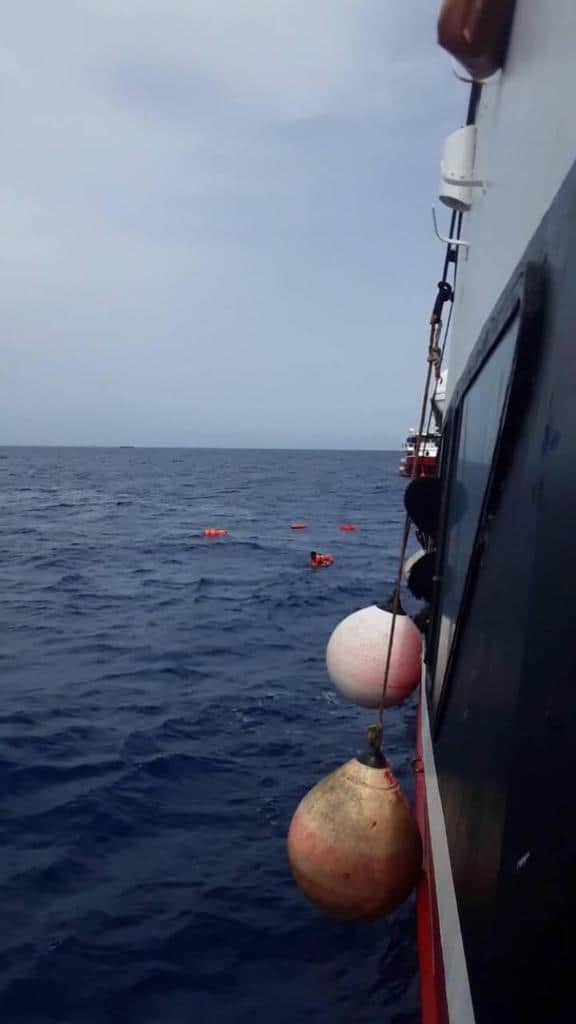
I was quite baffled as I was reading the inquiry report into the Easter incidents in Malta’s search and rescue area, seeing how Magistrate Joe Mifsud showed complete disregard to the evidence that he collected when delivering his conclusion. In other instances, he went to great lengths to understand the complexities of SAR (Search And Rescue). The AFM even organised a helicopter flight for him to demonstrate how radar works. I hope he enjoyed it.
It is worth noting that the AFM has a significant number of maritime patrol vessels at its disposal (15 in all), mostly purchased either through Italo-Maltese Protocols or EU funds. The inquiry notes that between the 10th and 14th April, there were four dinghies in Malta’s SAR (page 71). In his submissions, court expert Martin Bajada specifies that these dinghies were being monitored by the P02, P03, P05, P21, P24 and P62. AFM dedicated six of its fifteen naval assets to these dinghies, including the 60 m offshore P62 vessel. This makes one wonder then, why the AFM dispatched a slow, ill-equipped Libya-flagged fishing boat berthed in the Grand Harbour to save one of them in weather conditions that were quickly deteriorating.
Of these four dinghies in Malta’s SAR, two miraculously managed to reach the Sicilian coast. Curmi provides some detail on this miraculous achievement. As it turns out, the AFM had assisted them in Malta’s SAR until they entered Italy’s SAR. In Curmi’s own words “tajnihom l-affarijiet li kien hemm bżonn, immoniterjajnihom as a duty of care sakemm daħal ukoll fis-search and rescue region Taljan.”
I am sure his Italian counterparts will be thrilled hearing that. The AFM’s conduct here is dubious at best, if not illegal. It sent two overloaded dinghies in the open sea and assisted them in reaching Italy’s SAR. Is the AFM in the business of helping human trafficking now? For this, surely, cannot be called a rescue mission.
The NGO ship Aita Mari later rescued the third dinghy and this, therefore, leaves the dinghy carrying the migrants that would, eventually, be pushed back to Libya.
Jeffrey Curmi and Prime Minister Robert Abela were lying through their teeth during their testimony when they described the AFM’s naval assets as being dispersed. ‘Kienu sparparljati’ was their catch phrase throughout their testimonies, with Curmi at one point even using the occurrence of two bomb threats on land to justify this. Brigadier, are patrol boats being used for bomb disposal on land? He gives no account of where these assets were being deployed, nor is he asked to provide this information at any point in his testimony.
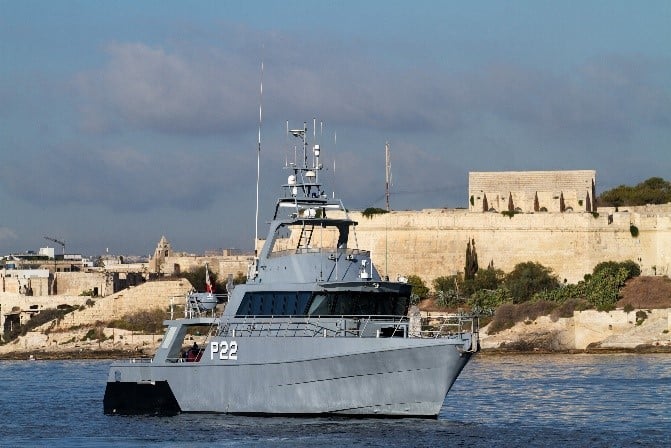
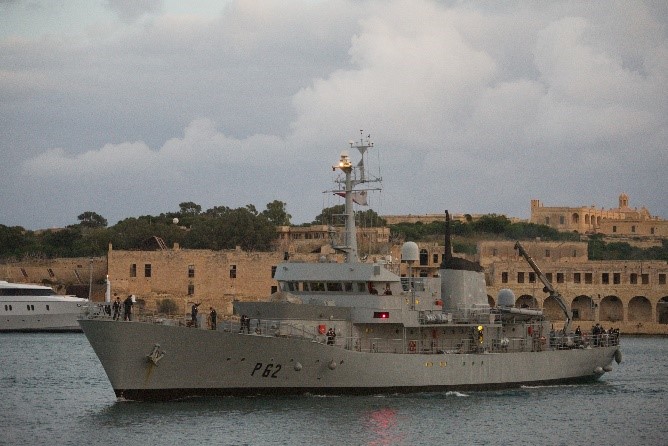
Images of the P22 (top) and P62 (bottom), some of the Patrol Vessels assigned to the dinghies in Malta’s SAR between the 10th and 14th April (www.afm.go.mt)
Essentially, Curmi presents two main arguments to defend the sub-contracting of the rescue mission. Firstly, he builds the narrative that the AFM’s naval assets were ‘sparpaljati’. This was disproven by the evidence presented by Bajada in his submission to the inquiry. Yet these submissions were not taken into consideration by the magistrate in his conclusions. The facts, as established by the inquiry, are that the AFM had six naval assets to follow the remaining three dinghies.
Secondly, Curmi argues that the primary role of the AFM is to coordinate and not to carry out rescue. Curmi then misquotes the 1979 SAR convention, of which Malta is signatory, by citing the following: “Tajjeb Ii ninnutaw li d-definition ta’ search and rescue services tispeċifika ċar u tond, u ħa naqra: ‘The performance of distress monitoring, communication, coordination of SAR functions, including provision of medical advice, initial medical assistance of medical evacuation through the use of public and private sources, including operating aircraft, vessels and other craft or installations‘.”
Interestingly, the quotation is correct except for the part in bold. That section should read “coordination AND search and rescue functions”. The accurate definition is quoted in another section (p. 380) of the report where the magistrate specifies Malta’s international obligations. Of course, Curmi might have genuinely misread it but he constantly hammered home the coordination duties rather than actual search and rescue. Unfortunately, even though Joe Mifsud quotes the correct definition, he appears to support Curmi’s point of view.
Nonetheless, the convention is clear. In the absence of any private assets in the area, the AFM had the duty to search and rescue. Malta has no separate coast guard and the AFM assumes this role. Curmi rightly explains that in standard rescue missions, the RCC would direct private vessels that are in the vicinity of the distress to aid or carry out the rescue as the delay in getting to the distress from land could result in loss of life. Mariners are obliged to obey these orders and assist and they certainly would not be paid. This generally happens because the private vessels would be closer to the distress and will provide help before the actual SAR vessel arrives.
What happened here was contrary to standard protocol. The private vessels were not on site or anywhere in the vicinity. They were berthed in the Grand Harbour. The crew were also being paid to carry out the rescue. In other words, the AFM, effectively, sub-contracted its rescue duties. The SAR convention defines that a search and rescue unit must be “a unit composed of trained personnel and provided with equipment suitable for the expeditious conduct of search and rescue operations”. Did the hired fishing vessels remotely fit this definition?
Curmi concedes that this was the first time that a private vessel had been used to carry out rescue in this way. Yet, he did not provide a single, tangible justification as to why they had decided to sub-contract a rescue mission to a shady private vessel with an ill-equipped craft and crew, in deteriorating weather conditions.
Curmi recounts how two fishing boats left the Grand Harbour on Sunday 12th at 9.00 p.m., meaning that the fishing vessel Mae Yemanja, was deployed 18 hours after the dinghy’s confirmed entry into Malta’s SAR. The Mae Yemanja switched off its AIS upon exiting the Grand Harbour, only to turn it back on Thursday night outside Libya, after it had dropped off the migrants the day before.
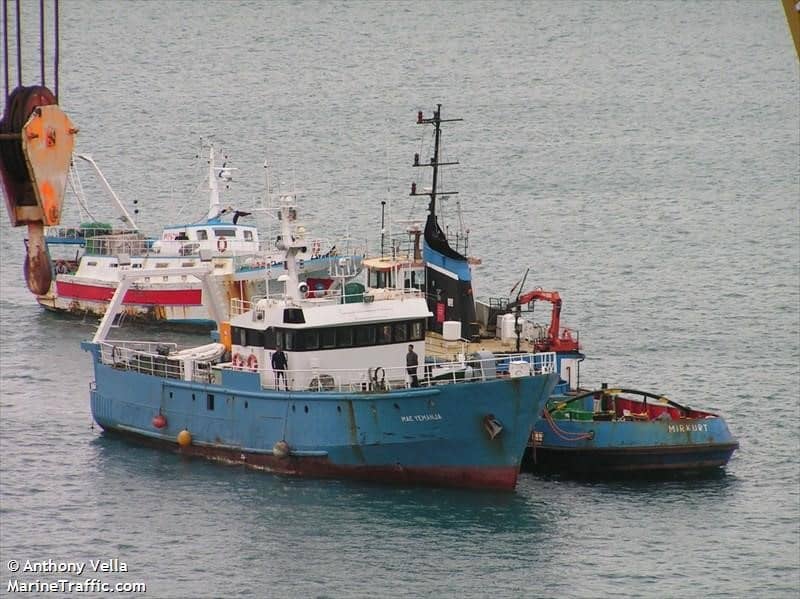
The Mae Yemanja, sent to carry out the rescue.
It took the Mae Yemanja till Monday at around 7.00 p.m. to arrive at the first coordinates which were around 80 nautical miles from Malta. A total of 22 hours at an average speed of 3.6 knots (6.5 kph). Literally, at walking speed. During this period, the AFM had again identified the new position of the dinghy by plane, but the fishing vessel was moving so slowly that it never made the position in time. Meanwhile, the weather conditions were rapidly deteriorating in the area with a building Force 5 to 6 southeasterly wind.
The rescue finally happened on Tuesday 13th between 3:00 and 5:00 a.m. in Force 6 southeasterly winds at around 80 nautical miles from Malta (and 30 nautical miles from Lampedusa), a few miles away from the original position. Very likely, the dinghy had drifted. That does not explain, however, why it took the Mae Yemanja at least another 8 hours to reach the final rescue position. The delay in arriving at the rescue site is another nail in the coffin, as by now weather conditions had significantly deteriorated. It is not clear why these vessels chose to navigate so slowly. The average speed of the Mae Yemanja, as listed on marinetraffic.com, is 9.4 knots which means it should have been on site at least 24 hours earlier.
Curmi tries to justify this delay, attributing it to the extensive distance at sea. He continues to mislead the magistrate by giving an example of a rescue taking place 300 nautical miles away. As if this rescue was taking place close to Bengazhi or Greece. This rescue happened only 80 nautical miles away.
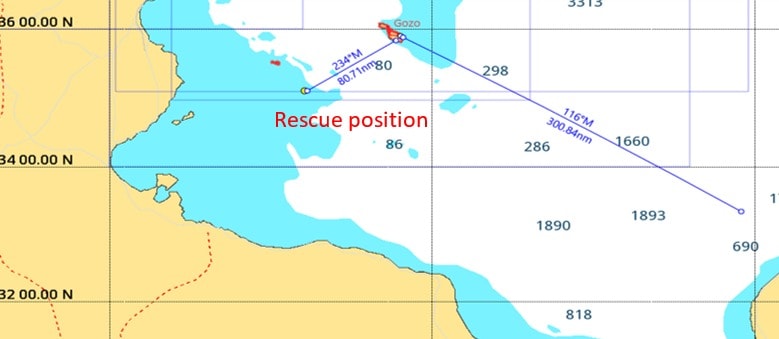
The rescue position at 80 nm from Malta and Jeffrey Curmi’s 300 nm mile example.
Most of the AFM’s offshore assets can navigate at 20+ knots covering the distance in less than 4 hours. They would have saved the migrants by Sunday morning when the weather was still fine and two days before the actual rescue.
It is clear that while the AFM upheld its search duties, locating the dinghy several times through its AirWing assets, it failed miserably in its rescue duties. That is why they are referred to as search and rescue missions. It is useless searching for people in distress and then negligently, if not purposefully, delaying their rescue.
Derek Michael Chauvin killed George Floyd by kneeling on his neck for 9 minutes, suffocating him for no reason whatsoever, except racial prejudice. At least seven (possibly 12) migrants were shamelessly left to die. They too would have pleaded ‘I can’t breathe’.
In the late hours of Saturday 11th April, Easter night, while many were celebrating the resurrection of Jesus Christ, a decision was taken by Jeffrey Curmi, Robert Abela and Clyde Caruana (as documented on p. 73) to sell out the rescue to ill-equipped private vessels even though the AFM had six SAR naval assets available and assigned to these dinghies. This decision resulted in a delayed rescue and the eventual death of several migrants on that dinghy. This was a botched rescue mission which ended with the push back of the surviving migrants to Libya. A push back coordinated by Brigadier Curmi himself. Yet, nobody wants to shoulder any responsibility.
A word of advice to Joe Mifsud; when one uses bomb threats on land to justify the misuse of naval assets in a rescue mission, they are clearly taking the piss out of you.